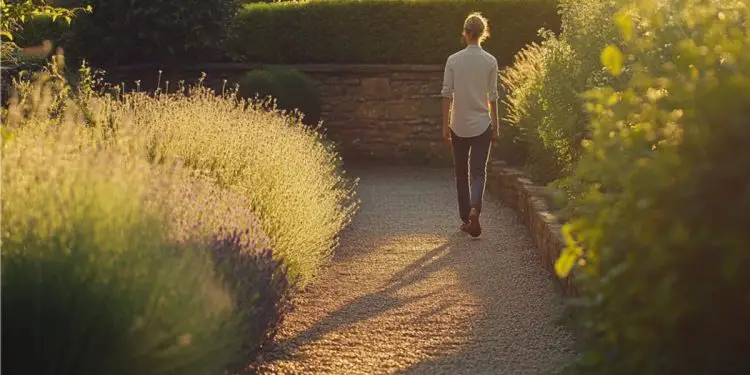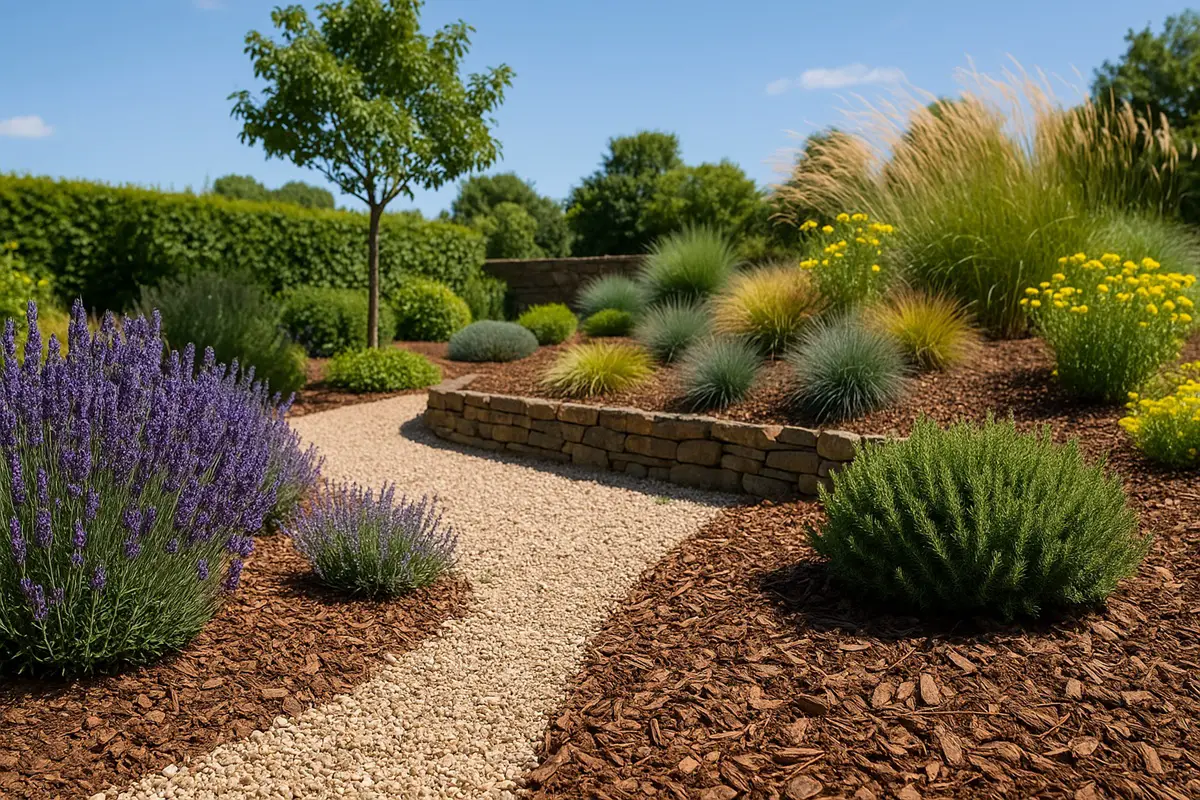Garden Layouts That Need Less Water During Summer Dry Spells

Long dry spells are increasingly common during Yorkshire summers, making it more important to rethink how you design and maintain your garden. Thirsty plants and sprawling lawns can quickly become unmanageable when the rain stops, and the temperature rises. Instead of fighting against the weather, building a layout that naturally copes with water shortages while still looking beautiful is far more effective.
Reduce Evaporation and Water Waste With Smart Mulching
Bark mulch is one of the simplest and most effective tools for helping your garden hold onto water. Applied correctly, it stops precious moisture from escaping into the air. It creates a protective layer over the soil, slowing evaporation and shielding roots from extreme heat.
A good mulch layer also keeps weeds in check, reducing how often you need to pull them up or water overly competitive growth. As it breaks down, it enriches the soil, adding nutrients and making it easier to work with year after year.
Buying bulk bark and woodchip for gardens is a practical way to cover wider areas and achieve a consistent layer that protects soil structure and reduces watering. Just make sure you keep it clear of stems and top it up regularly for the best results.
Designing With Drought-Resistant Plants
Water-wise planting means selecting species that will not suffer during a hot Yorkshire summer. Swap out high-maintenance lawns and thirsty flowers for tough, attractive alternatives like ornamental grasses and hardy herbs. Lavender, rosemary and thyme cope well with limited watering and bring a lovely scent and structure to your borders.
You will spend far less time tending to these plants because they adapt better to local conditions. When grouped by similar watering needs, your whole garden becomes more efficient. You will not waste water on species that do not require it, and you will avoid overwatering those that do.
Adding bark mulch around the base of these plants enhances their resilience even more. With this approach, your garden does not just survive dry weather, it thrives through it.
Zoning Your Garden to Match Water Needs
Creating zones helps you focus water where it is most needed. It makes sense to group plants based on their thirst. For example, you could have high-water zones for vegetables, moderate zones for perennials, and low-water zones for drought-hardy shrubs and herbs.
Put water-loving plants near areas that naturally stay wetter, like spots under downpipes or in slight dips in the ground. That way, you make the most of every drop that falls.
Microclimates can also help you get smarter about water. Hedges, walls and pergolas protect vulnerable plants from wind and sun, giving them a better chance to hold onto moisture. These small adjustments can make a huge difference when dry weather lingers.
Ideal Plants for Low-Water Areas
Some plants are naturally better suited to handle Yorkshire’s fluctuating climate. Look for those with deep roots and tough foliage. Sea thrift, yarrow and bird’s foot trefoil all cope well with limited water and give you strong colour through the dry months.
Mediterranean herbs work brilliantly too. Their silver leaves help reflect sunlight and retain moisture. Once established, these plants need very little watering, making them perfect for borders and beds in full sun.
Resilient grasses like blue fescue or tufted hair bring movement and interest without demanding attention. With the right plant choices, you can reduce upkeep and still keep the garden looking full and vibrant.
Locking in Moisture With Bark Mulch
Using bark mulch is about more than reducing how often you water. It plays a key role in protecting your soil and plants throughout the year. During summer, it shields roots from heat and slows down moisture loss. In colder months, it insulates the soil to keep roots safe from sudden frosts.
Fine mulch is great for beds you replant each year, while chunkier bark suits perennial borders and provides a more polished look. Whatever you choose, spread it to a depth of five to seven centimetres for the full benefit, and avoid placing it too close to stems. Refreshing the mulch in spring helps it last through the growing season.
Harvesting Rainwater to Support Mulched Gardens
Rather than relying fully on mains water, it is a smart move to collect rain when it does come. Even a small shed roof can fill a water butt surprisingly quickly. If you have the space, larger underground tanks can be added for extra capacity.
Rain gardens, which collect runoff in shallow, mulched depressions, are another clever option. They hold onto water and release it slowly to nearby plants. With bark mulch on top, you reduce evaporation and erosion, making the most of each rainfall.
Matching your storage to your garden’s size helps you use harvested rainwater efficiently. Combined with these systems, mulched beds create a garden that is always ready for whatever the weather brings.
Use Permeable Paths to Keep Soil Moist
Solid paving might be practical, but it sheds water fast. Instead, choose paths made from loose gravel or permeable blocks to let rain soak in. This helps replenish the soil and maintain healthy plant roots.
Placing bark mulch alongside gravel paths extends the benefit, protecting nearby soil from drying out and reducing weed growth. It also creates a tidy look with minimal effort. You will not need to water as often, and your garden will stay usable even after heavy rain.
Stick with local materials that suit your climate. They will handle frost, rain and sun better than synthetic options and reduce the need for ongoing upkeep.
Keep Your Garden Thriving Through Summer Dry Spells
With thoughtful planning and the right materials, you can reduce water use without compromising the look or health of your garden. Bark mulch is one of the simplest tools at your disposal, helping soil retain moisture, limiting weed growth and boosting plant resilience across the seasons. Combined with drought-friendly designs, rainwater harvesting and smarter planting, you will spend less time watering and more time enjoying your space, even during the hottest months.










